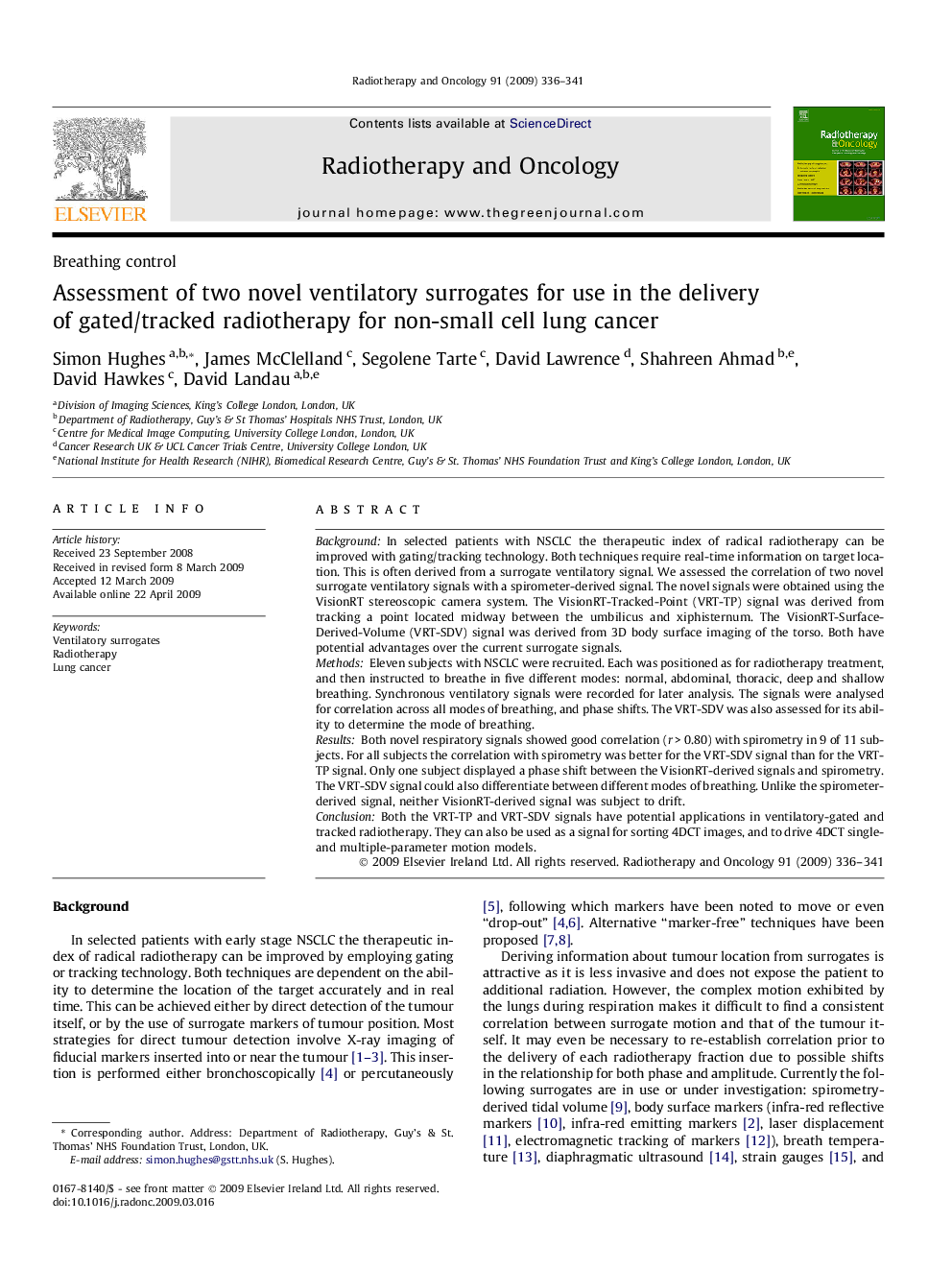| Article ID | Journal | Published Year | Pages | File Type |
|---|---|---|---|---|
| 2159114 | Radiotherapy and Oncology | 2009 | 6 Pages |
BackgroundIn selected patients with NSCLC the therapeutic index of radical radiotherapy can be improved with gating/tracking technology. Both techniques require real-time information on target location. This is often derived from a surrogate ventilatory signal. We assessed the correlation of two novel surrogate ventilatory signals with a spirometer-derived signal. The novel signals were obtained using the VisionRT stereoscopic camera system. The VisionRT-Tracked-Point (VRT-TP) signal was derived from tracking a point located midway between the umbilicus and xiphisternum. The VisionRT-Surface-Derived-Volume (VRT-SDV) signal was derived from 3D body surface imaging of the torso. Both have potential advantages over the current surrogate signals.MethodsEleven subjects with NSCLC were recruited. Each was positioned as for radiotherapy treatment, and then instructed to breathe in five different modes: normal, abdominal, thoracic, deep and shallow breathing. Synchronous ventilatory signals were recorded for later analysis. The signals were analysed for correlation across all modes of breathing, and phase shifts. The VRT-SDV was also assessed for its ability to determine the mode of breathing.ResultsBoth novel respiratory signals showed good correlation (r > 0.80) with spirometry in 9 of 11 subjects. For all subjects the correlation with spirometry was better for the VRT-SDV signal than for the VRT-TP signal. Only one subject displayed a phase shift between the VisionRT-derived signals and spirometry. The VRT-SDV signal could also differentiate between different modes of breathing. Unlike the spirometer-derived signal, neither VisionRT-derived signal was subject to drift.ConclusionBoth the VRT-TP and VRT-SDV signals have potential applications in ventilatory-gated and tracked radiotherapy. They can also be used as a signal for sorting 4DCT images, and to drive 4DCT single- and multiple-parameter motion models.
